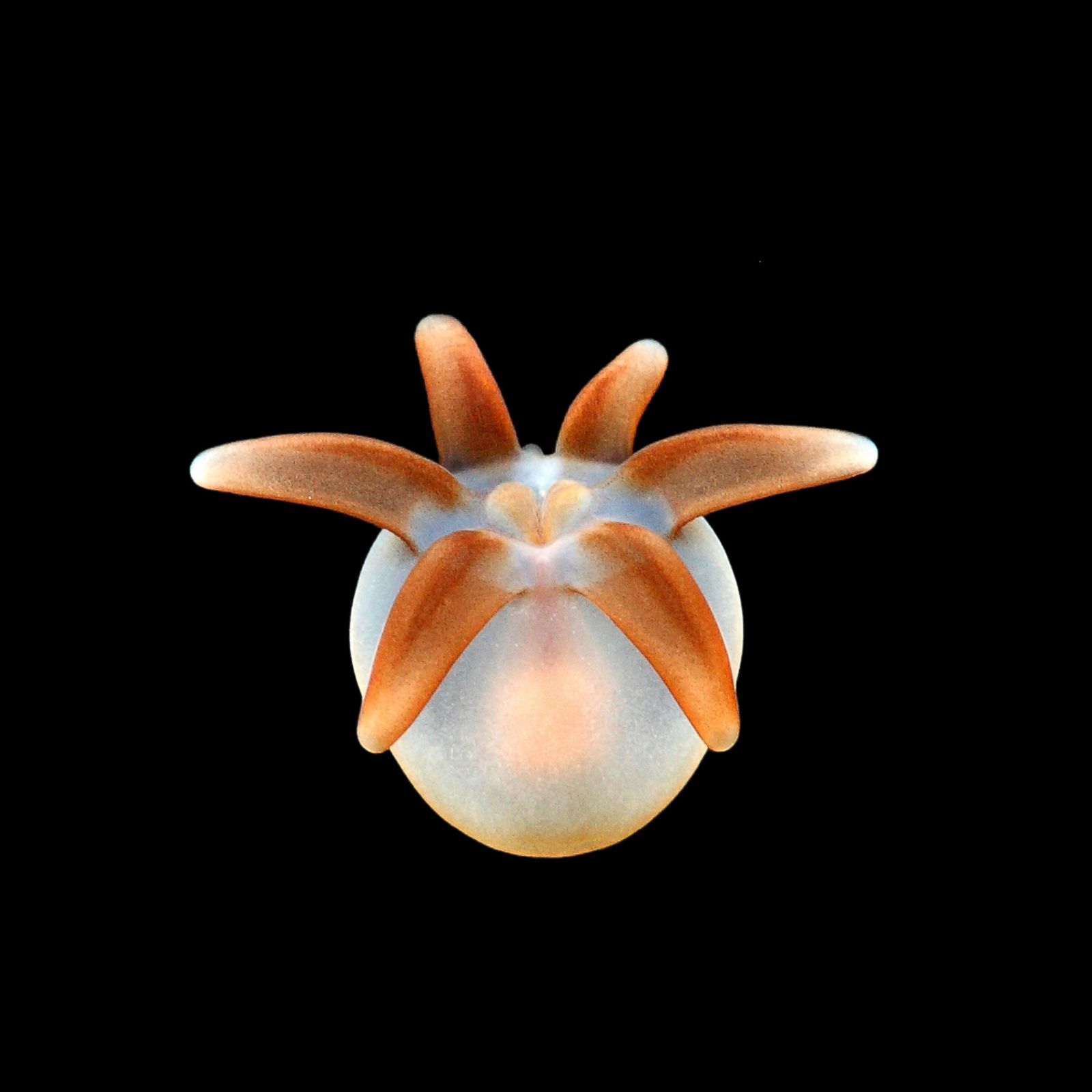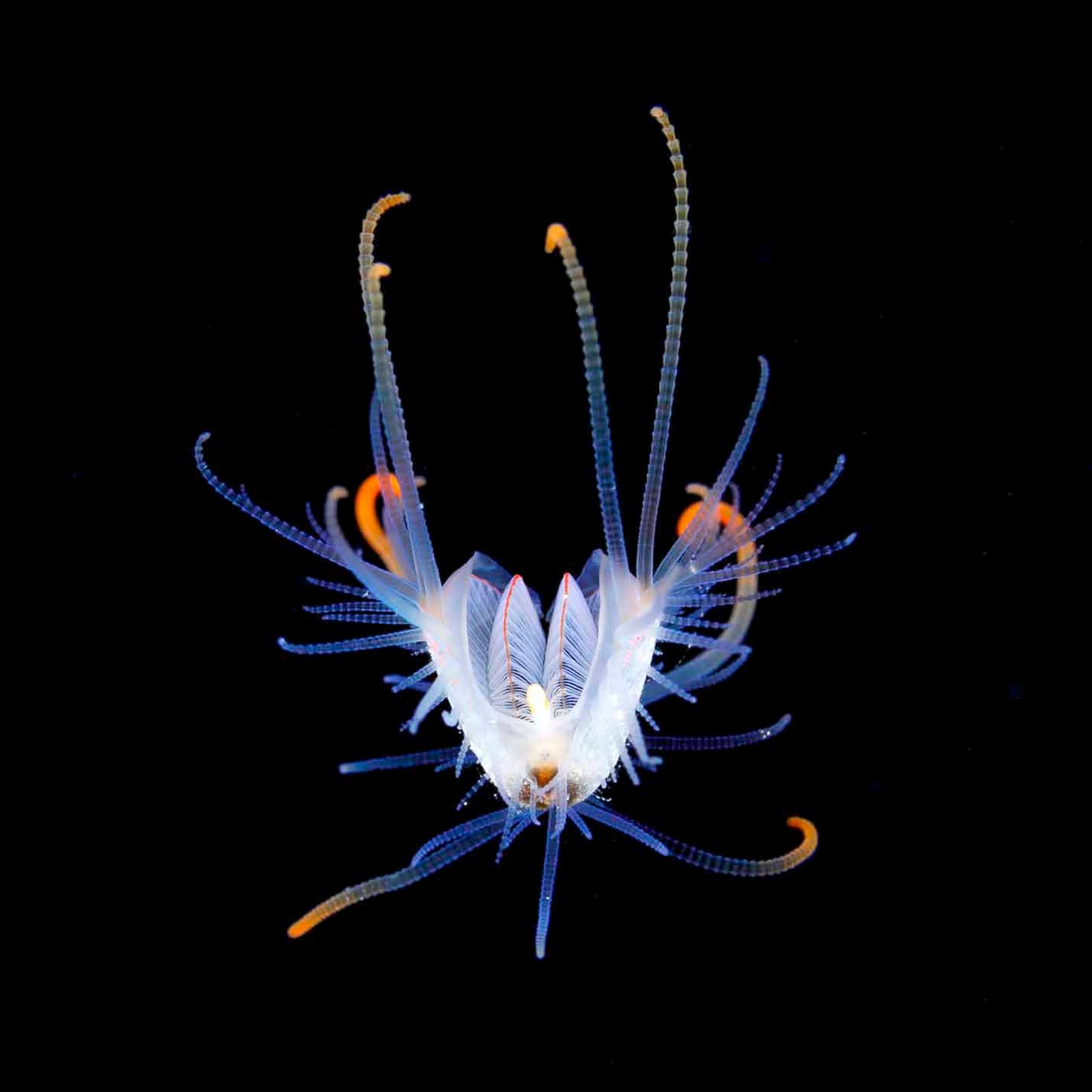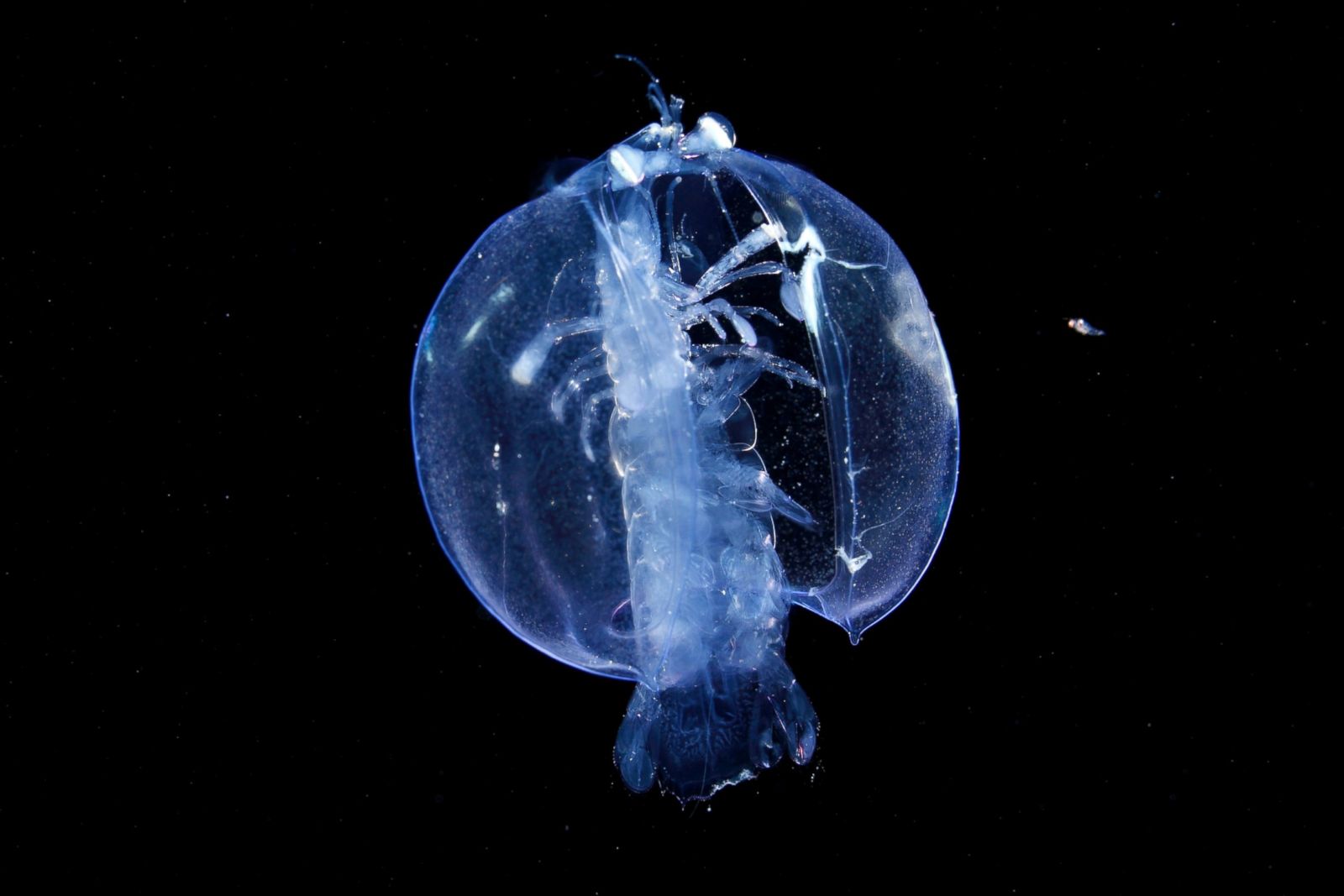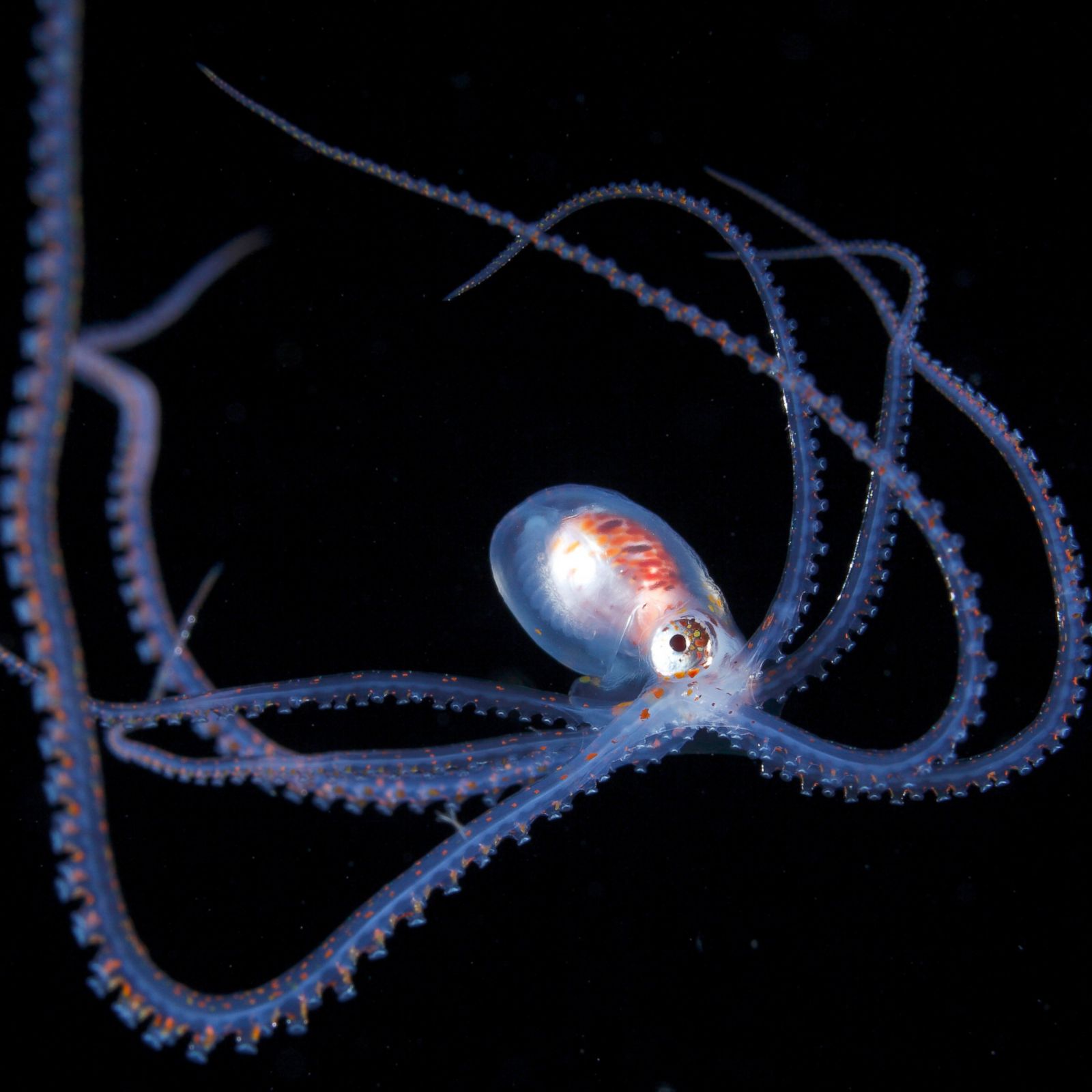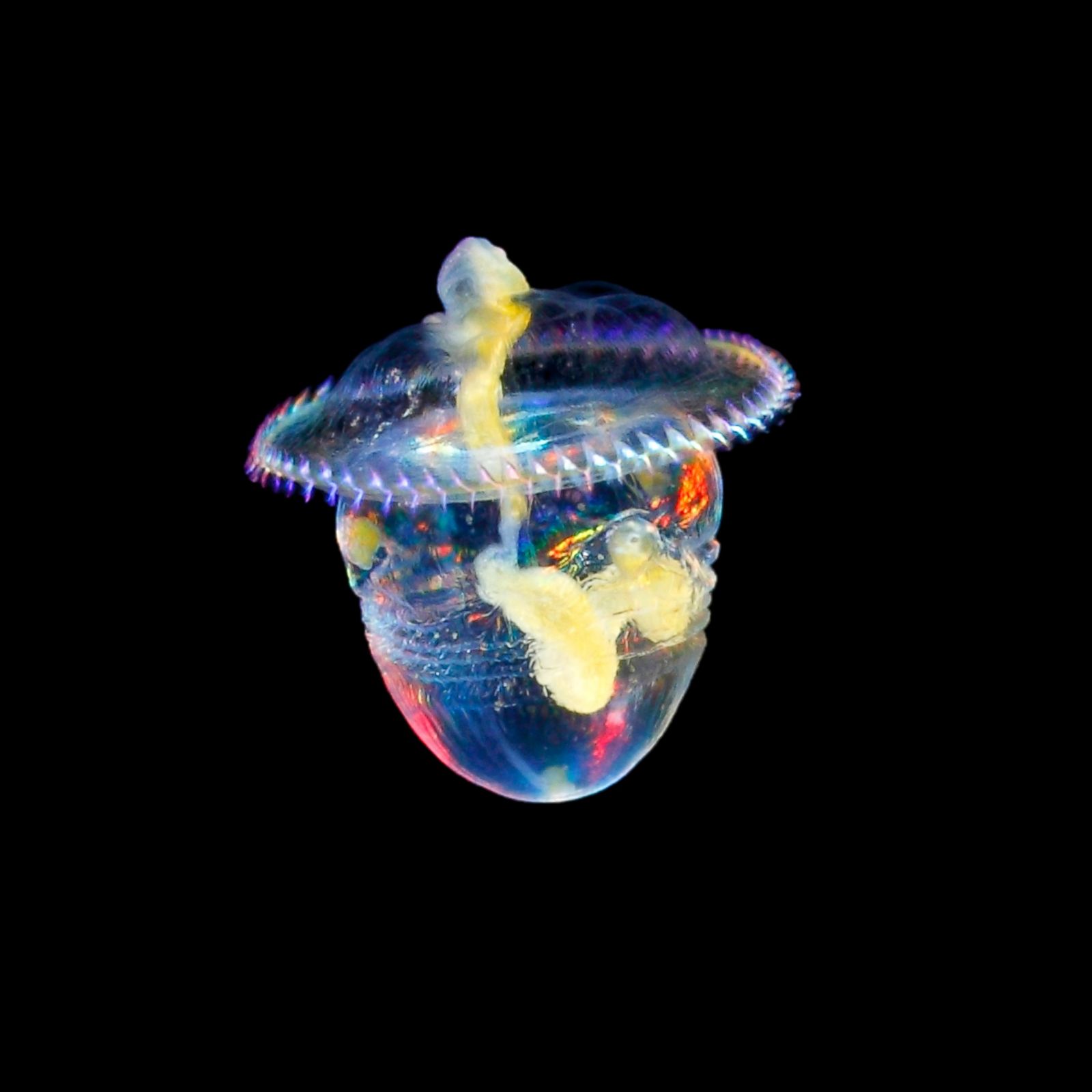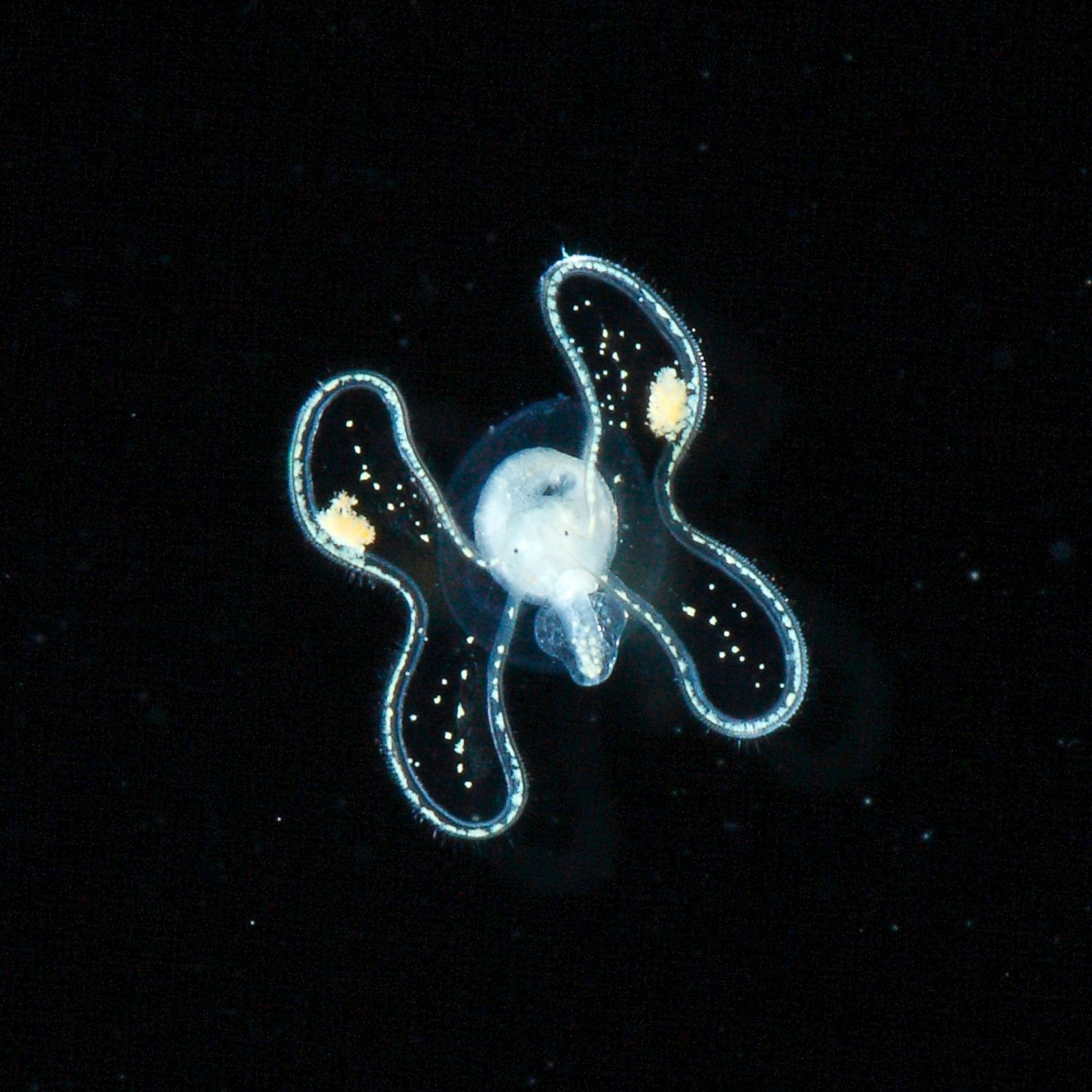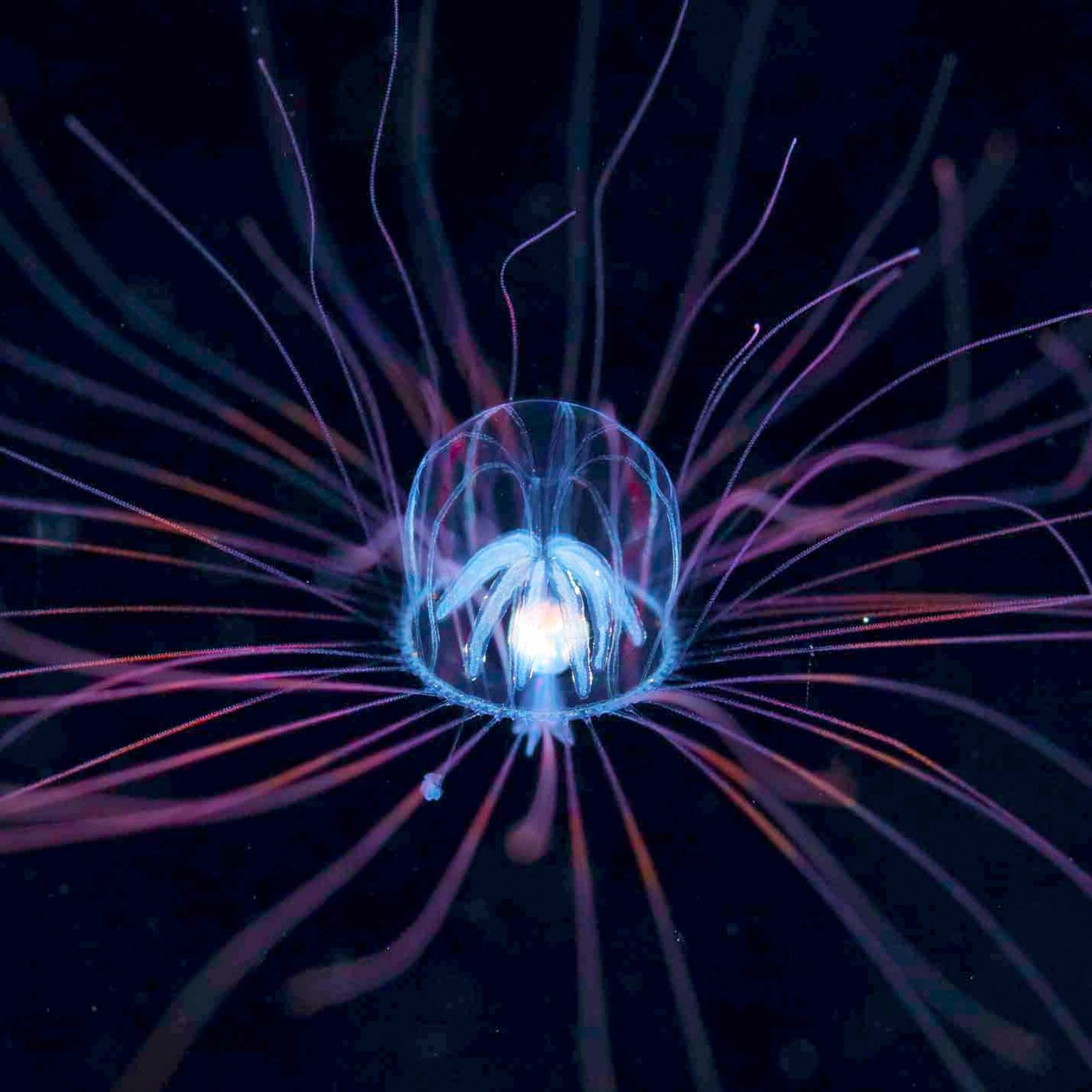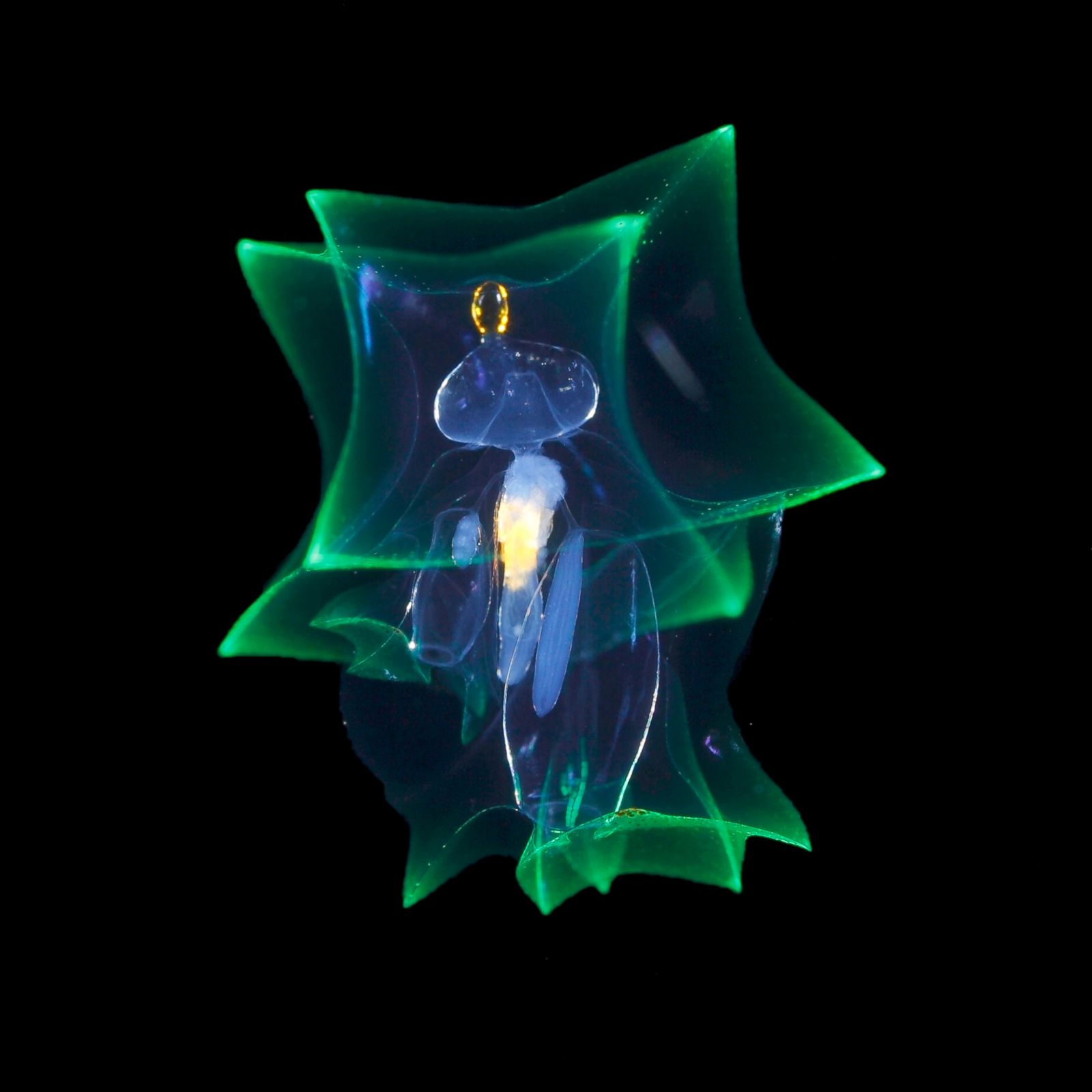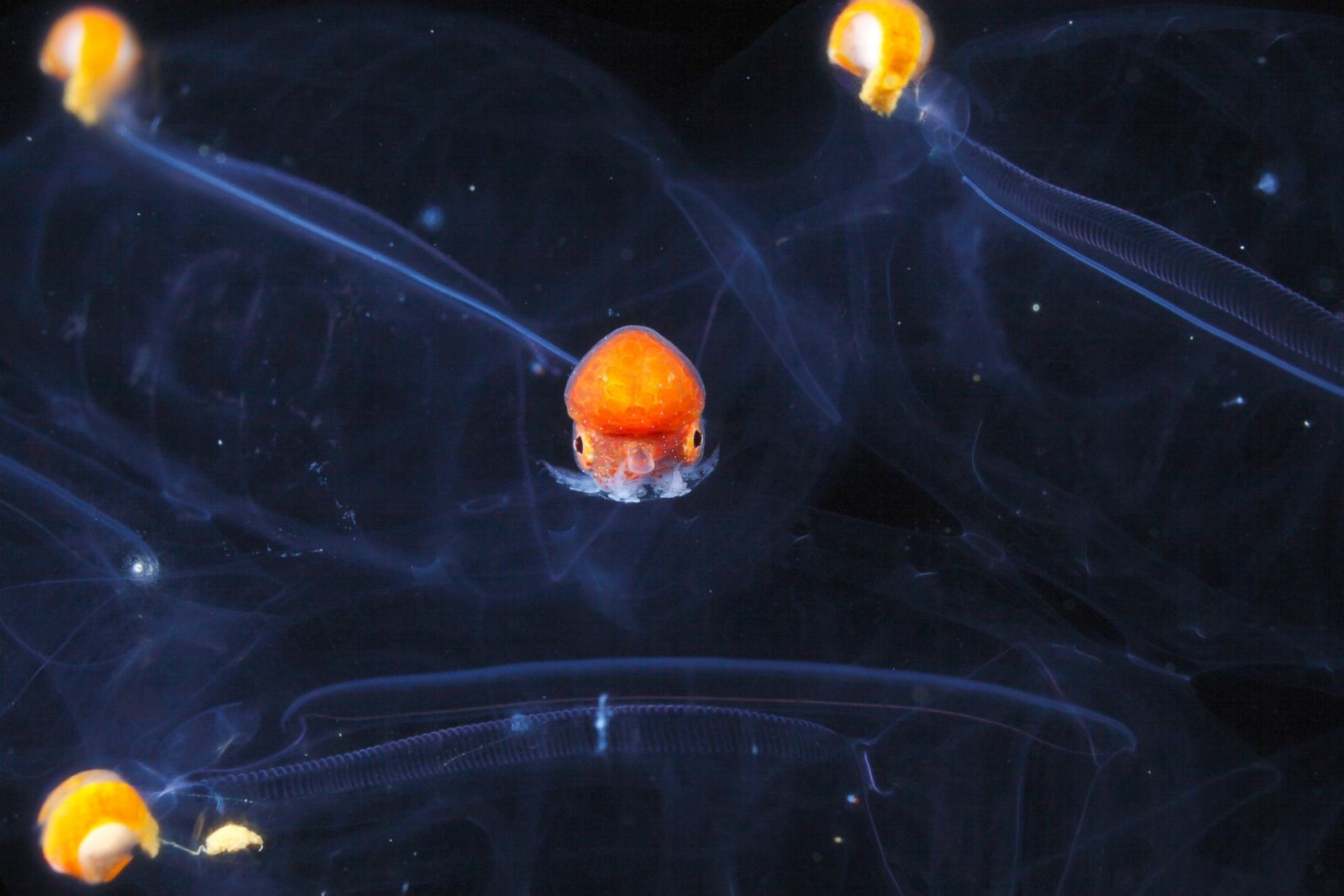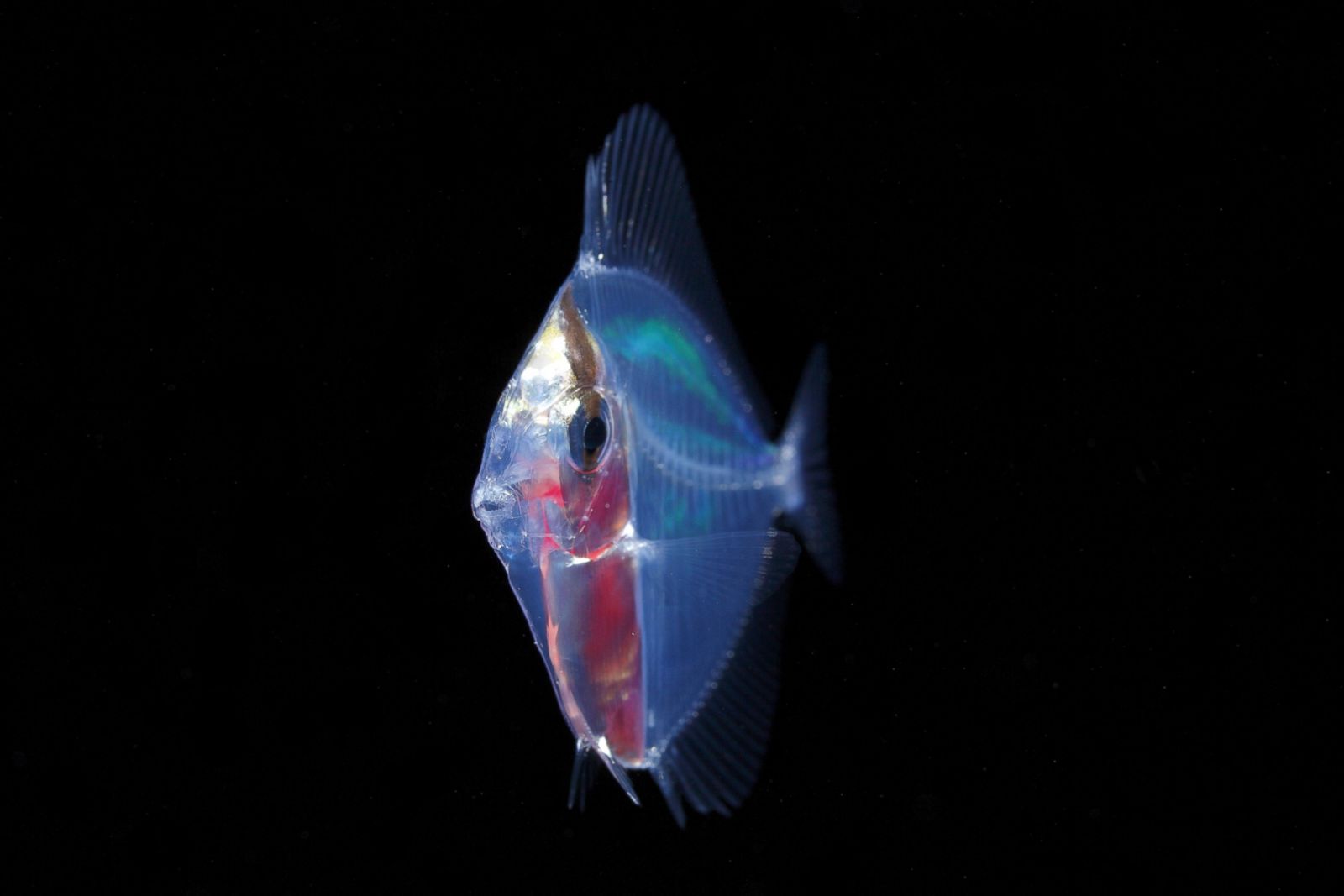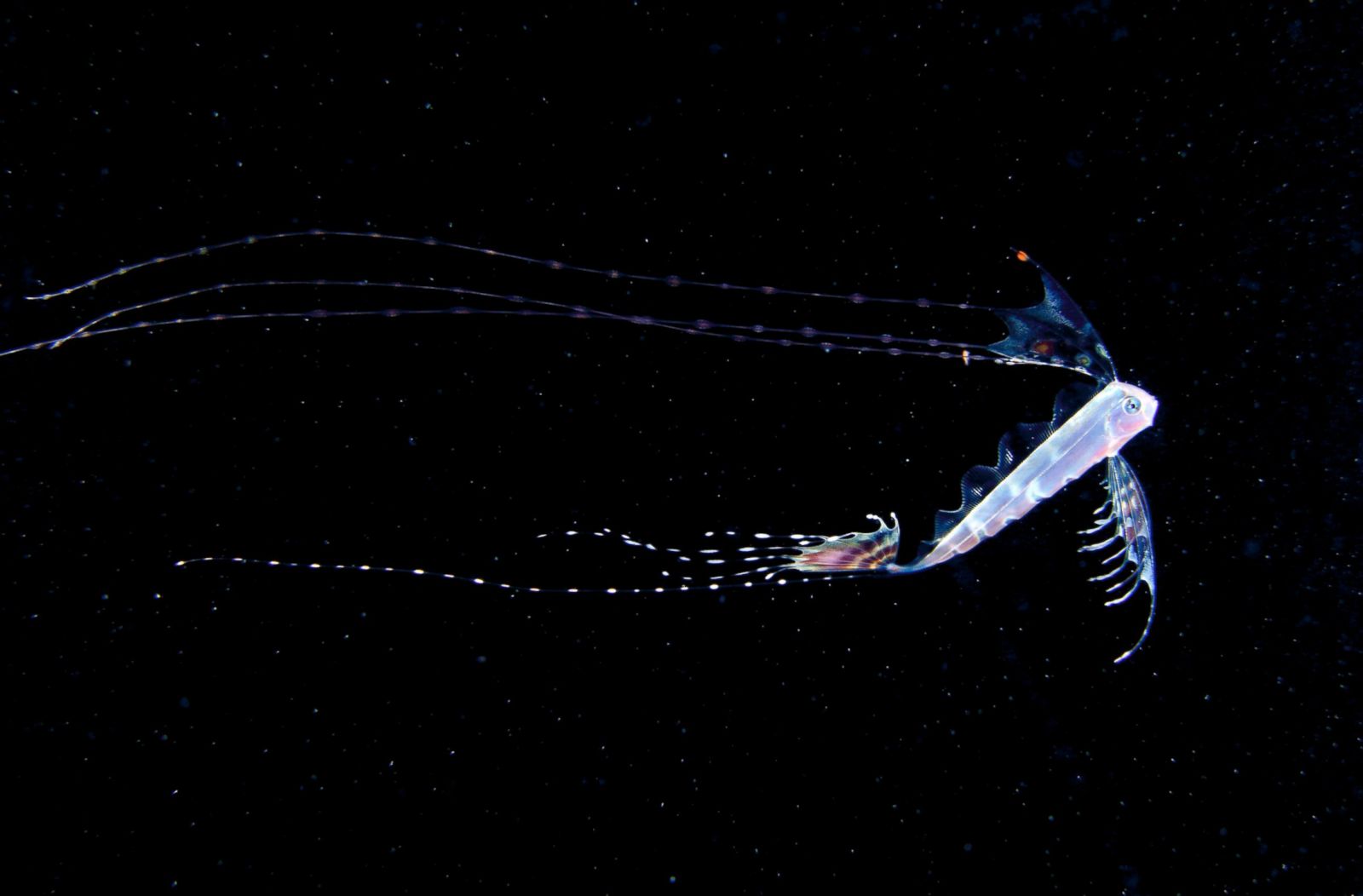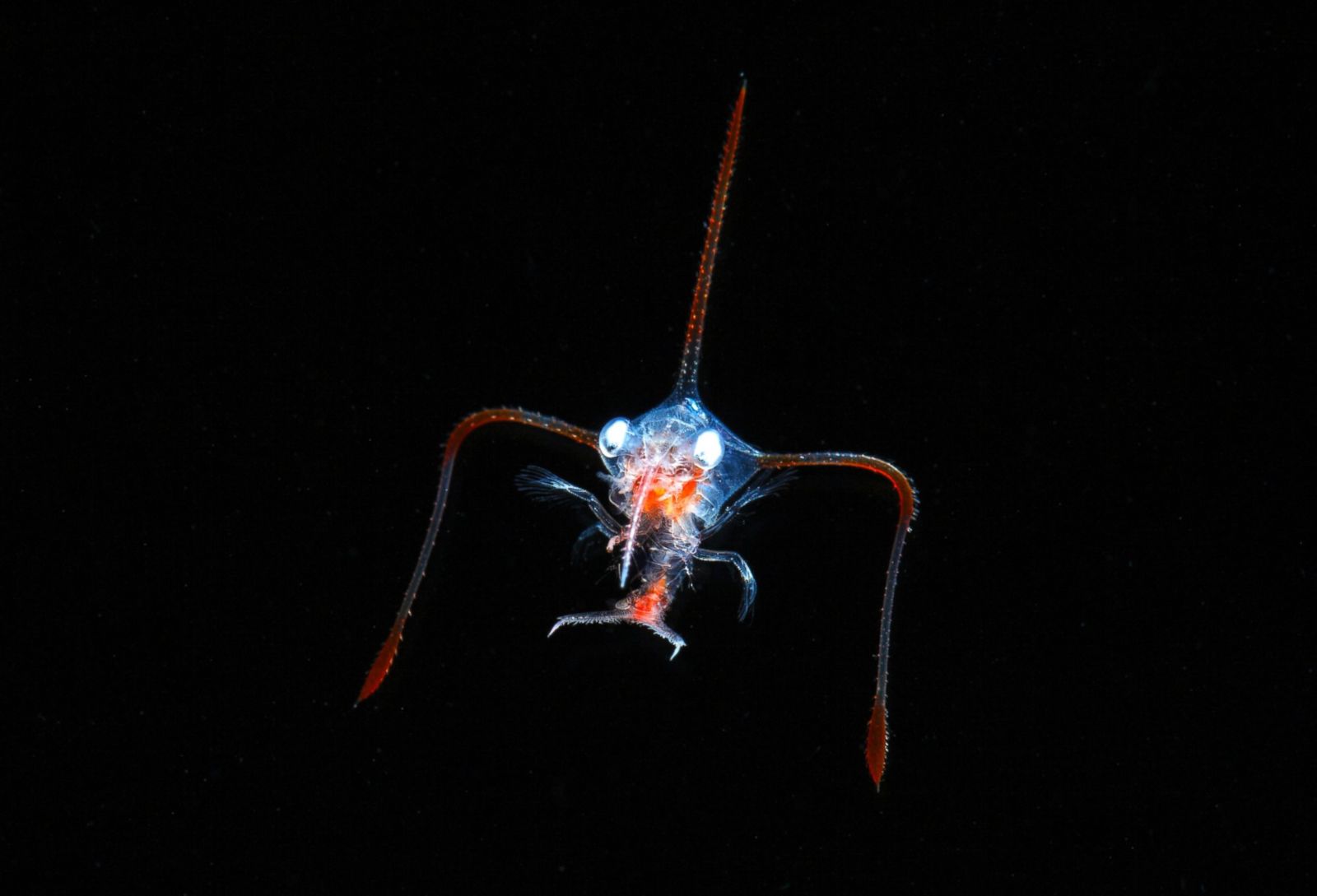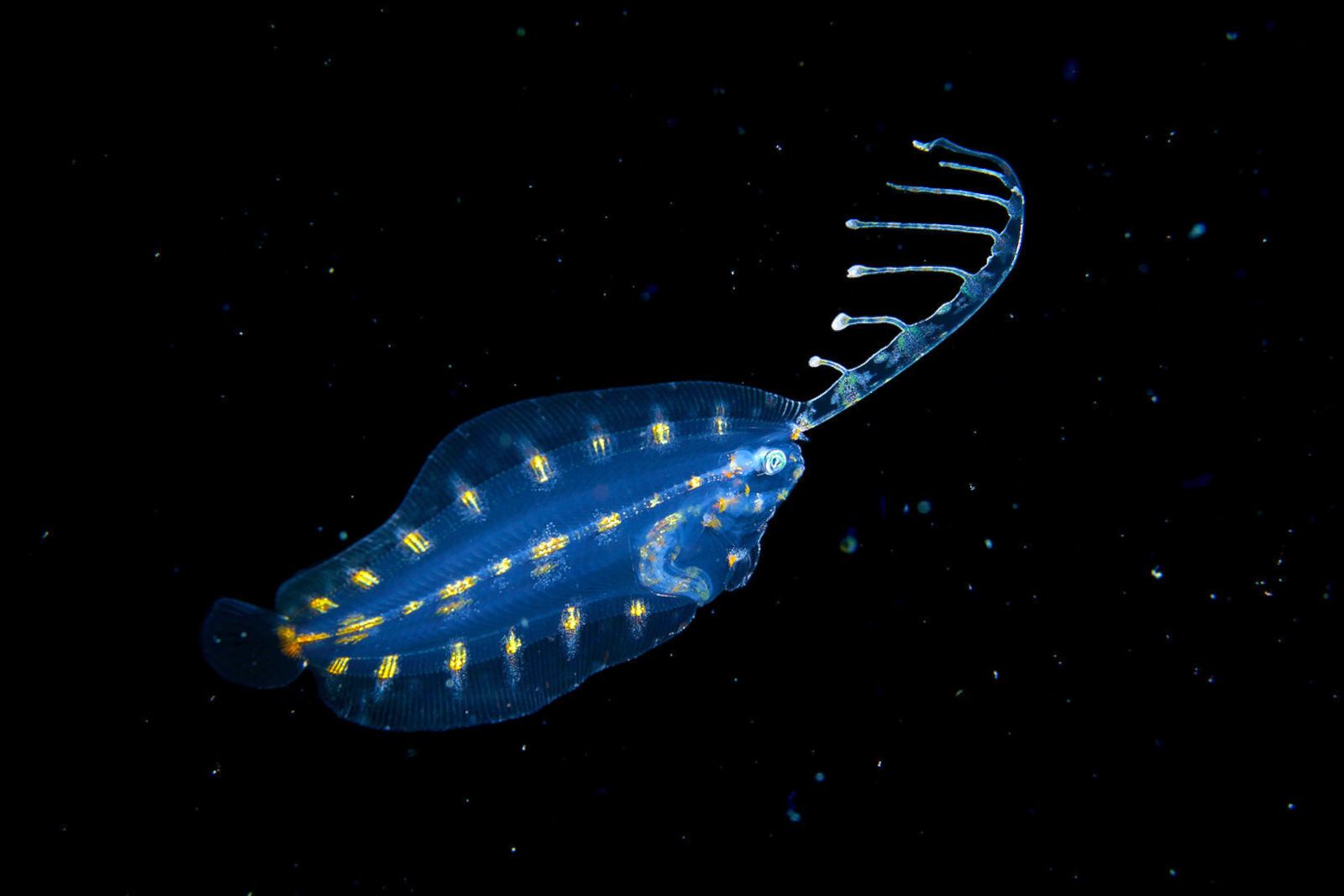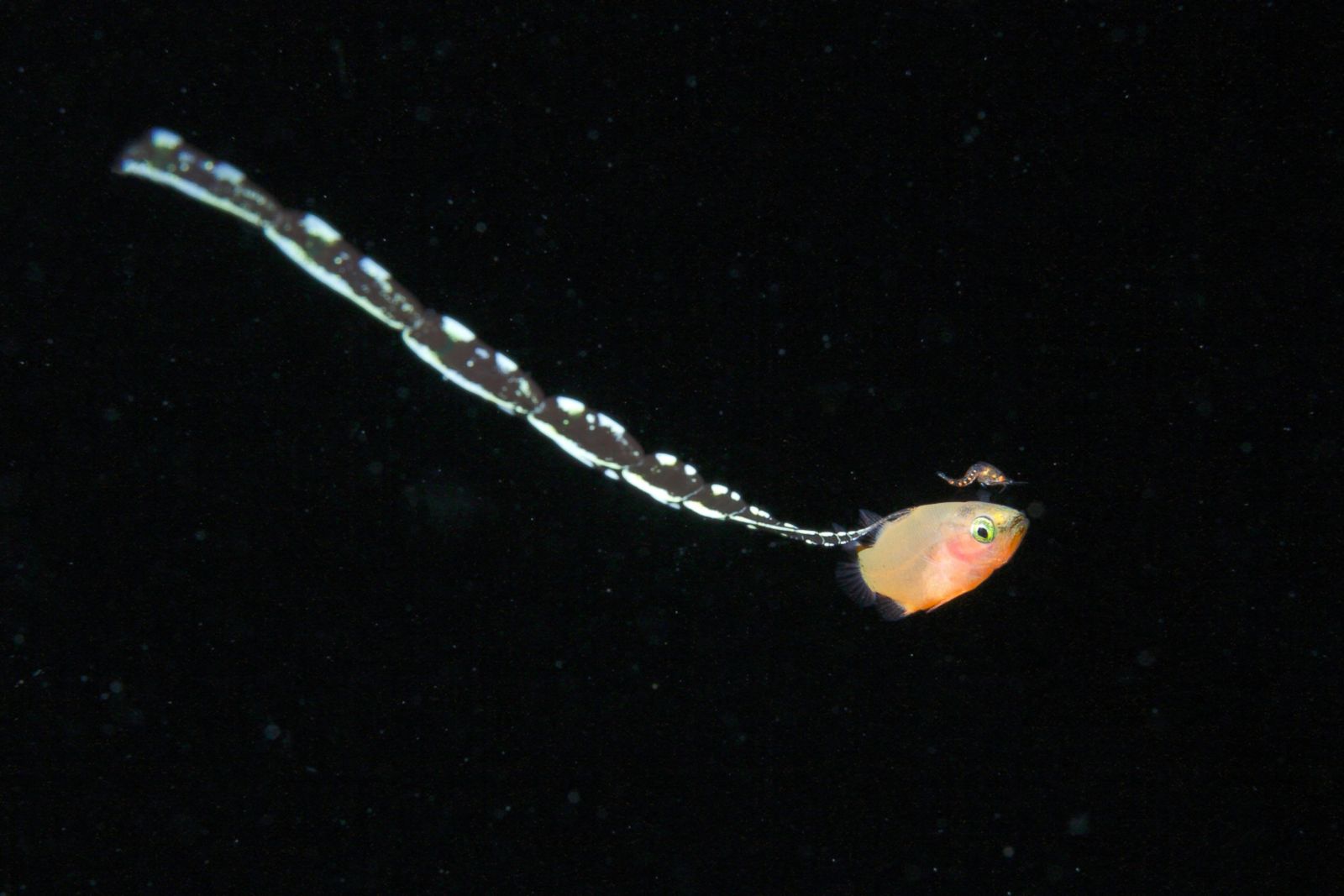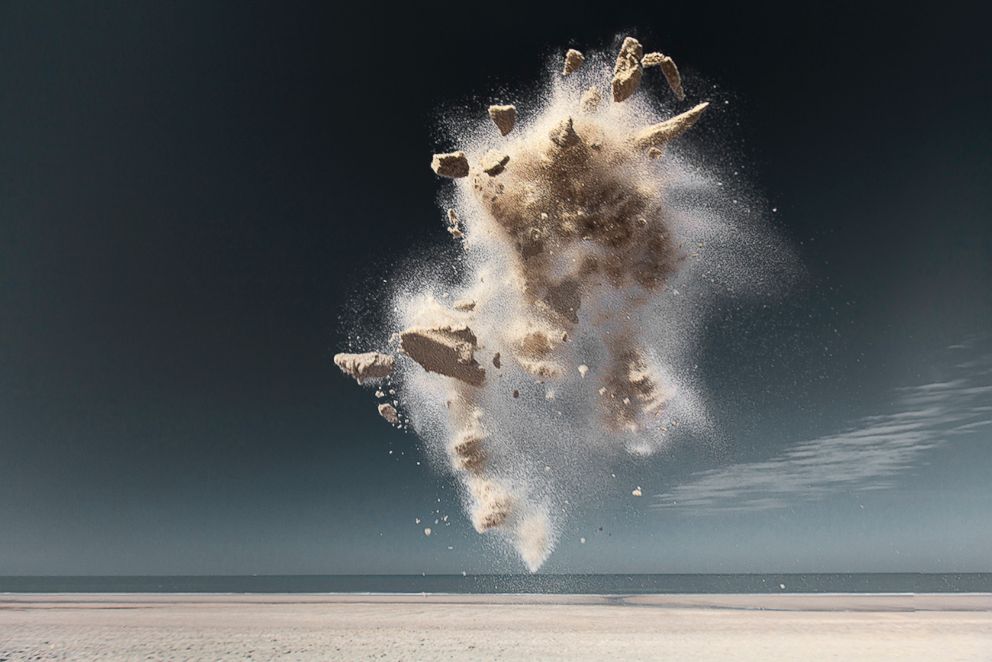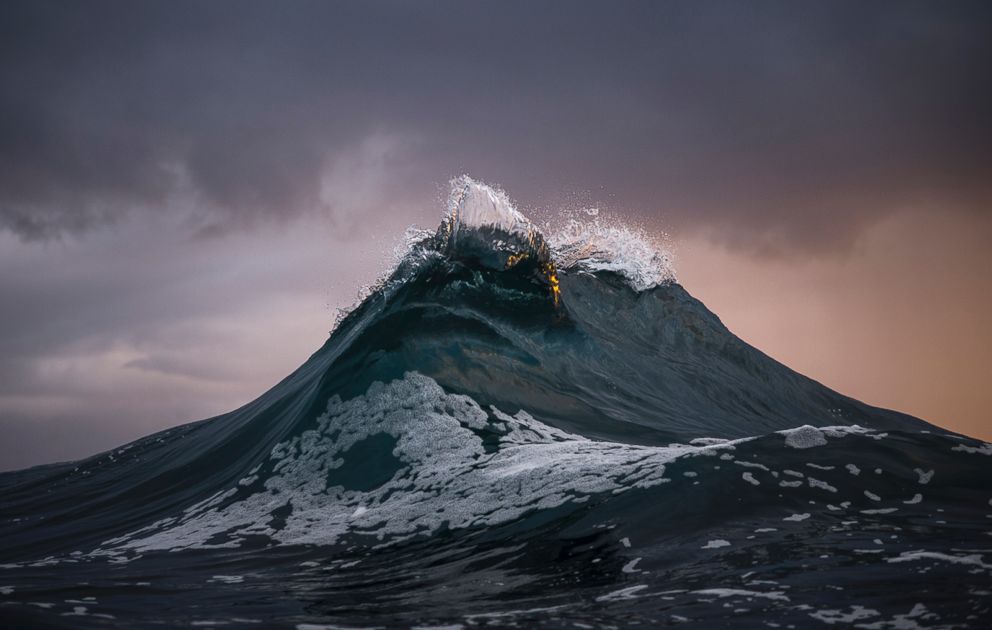The beauty and complexity of plankton
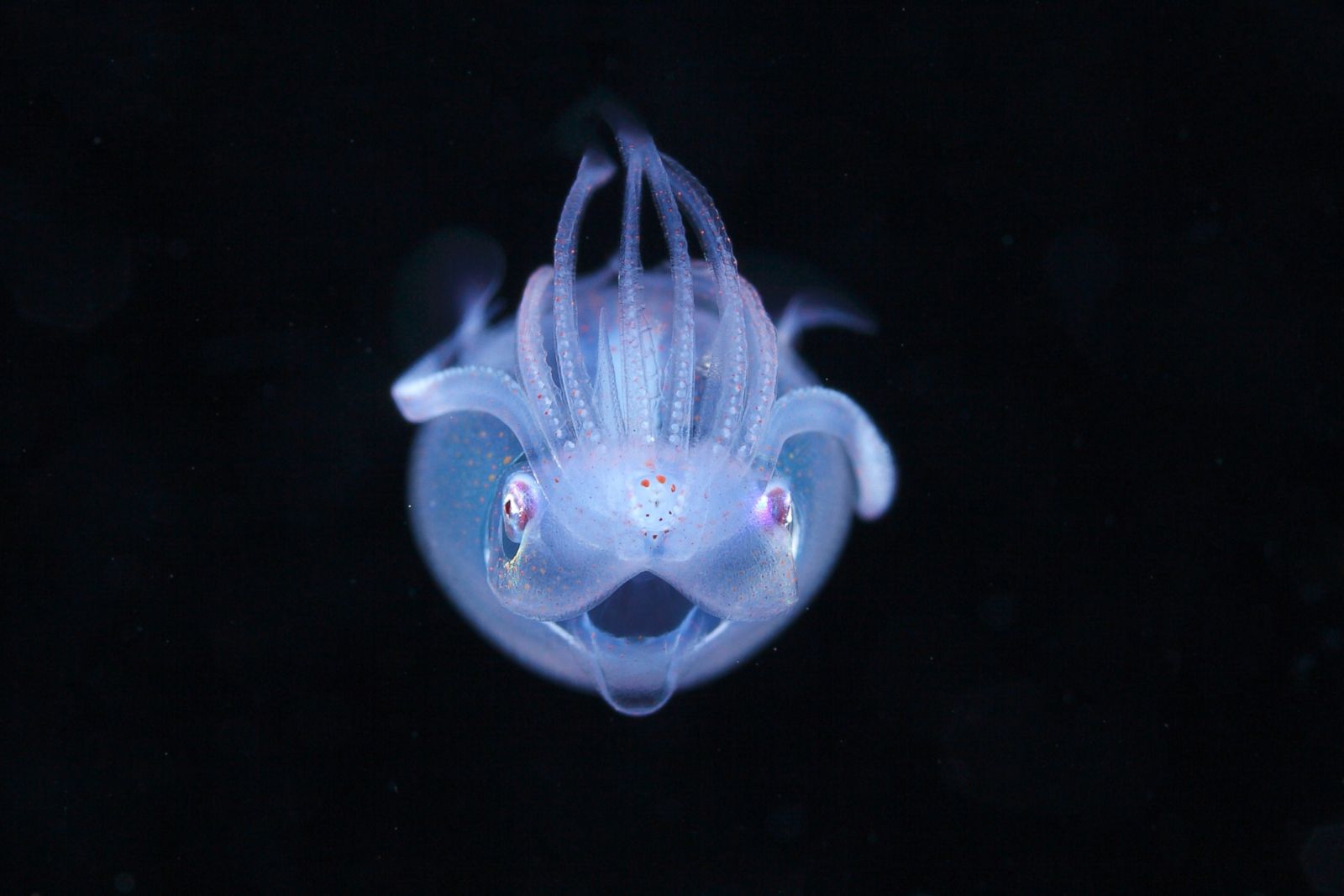
1 of 15
Plankton is made up of a diverse collection of microscopic organisms that are unable to swim against the current in large bodies of water. These organisms include bacteria, algae, single-celled animals and even the eggs and larval stages of larger animals. Photographer Ryo Minemizu won a Nikkei National Geographic Photo Award for his photographs of plankton that he calls "Preciousness of Life." Here, a very young diamond squid strikes a "threatening" pose by raising its arms.
